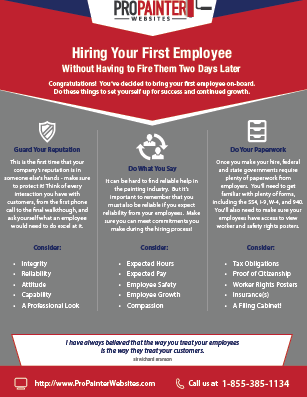The Significance Of Weather In Commercial Exterior Paint: What You Must Recognize
The Significance Of Weather In Commercial Exterior Paint: What You Must Recognize
Blog Article
Web Content Writer-Cash Hollis
When you're intending an industrial outside painting job, don't ignore the influence of weather condition on your outcomes. You need to consider variables like temperature level, moisture, and precipitation, as they can make or damage your paint work. As an example, did you know that suitable conditions call for specific temperature ranges and humidity levels? Falling short to keep an eye on these elements can lead to unequal finishes or perhaps damage to fresh paint. Comprehending these elements is key to accomplishing a lasting, specialist result. So, what you can check here should you watch out for?
Temperature Considerations
When it comes to industrial external painting, temperature level plays a critical role in the outcome of your job. If you're repainting in severe warmth, the paint can dry as well rapidly, causing concerns like inadequate bond and uneven surfaces. You want to go for temperatures in between 50 ° F and 85 ° F for the best results. Below 50 ° F, paint might not cure correctly, while over 85 ° F, you run the risk of blistering and cracking.
Timing your job with the best temperatures is crucial. Beginning your job early in the early morning or later in the mid-day when it's cooler, specifically during hot months.
Additionally, consider the surface temperature; it can be substantially higher than the air temperature level, particularly on sunny days. Use a surface area thermostat to examine this prior to you start.
If temperatures are unforeseeable, keep an eye on the weather report. Unexpected temperature level declines or heat waves can derail your strategies. You do not wish to begin repainting just to have the problems alter mid-project.
Humidity Degrees
Humidity degrees significantly affect the success of your industrial outside painting task. When the moisture is too expensive, it can impede paint drying and treating, bring about a series of problems like poor bond and finish high quality.
If you're planning a job during moist conditions, you could discover that the paint takes longer to completely dry, which can expand your task timeline and increase prices.
Alternatively, reduced humidity can likewise position obstacles. Paint may dry out as well swiftly, protecting against proper application and resulting in an uneven coating.
You'll want to keep an eye on the humidity levels closely to guarantee you're functioning within the perfect array, commonly in between 40% and 70%.
To get the most effective outcomes, consider making use of a hygrometer to gauge humidity before starting your task.
If you find the degrees are outside the ideal array, you may need to readjust your routine or pick paints created for variable problems.
Always get in https://local-painters-near-me65319.therainblog.com/32189020/update-your-living-area-the-benefits-of-utilizing-expert-residential-paint-solutions with the producer's guidelines for details suggestions on humidity tolerance.
Rainfall Impact
Rain or snow can considerably interrupt your industrial exterior painting plans. When rainfall occurs, it can get rid of fresh used paint or develop an uneven coating. Preferably, you want to pick days with completely dry climate to guarantee the paint sticks properly and treatments effectively. If you're caught in a rain shower, it's ideal to stop the project and await conditions to enhance.
Furthermore, snow can be even more harmful. Not just does it produce a damp surface area, yet it can also decrease temperature levels, making it difficult for paint to dry. This can lead to problems like peeling off or blistering down the line.
It's essential to check the weather report prior to starting your task. If rain or snow is predicted, think about rescheduling.
Constantly remember to enable appropriate drying time in between coats, specifically if the climate remains unforeseeable.
Verdict
To conclude, keeping an eye on the climate is crucial for an effective industrial external painting task. By checking temperature, humidity, and precipitation, you can guarantee the best conditions for application and curing. Keep in mind to plan your work around desirable climate and always adhere to producer standards. With the right approach, you'll accomplish a resilient, beautiful surface that can endure the aspects. Do not allow the climate catch you off-guard-- stay notified and repaint smart!
